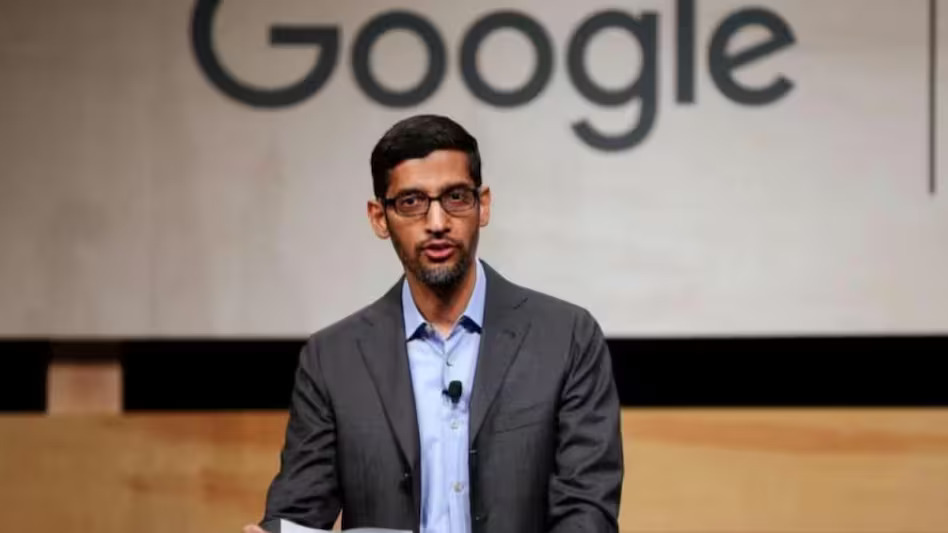
“I’m deeply sorry for that. The fact that these changes will impact the lives of Googlers weighs heavily on me, and I take full responsibility for the decisions that led us here,” ~ Sundar Pichai
Recently, tech companies laid off many workers, and it would seem that the pink slip storm has not yet passed us by, and more could be on the way.
I am confused.
Now, don’t get me wrong. Using the much-debated and controversial ‘Vitality Curve‘ (introduced by GE’s Jack Welch in the 1980s) has been common for almost half a century now, in some way or form, a little more covertly recently than when it was first introduced. There are still companies like Amazon, IBM, Yahoo, Motorola, AIG, BNYM, HP, EY etc., who use it, or similar policies by giving them euphemistic but awkward names like Quarterly Performance Review, Personal Business Commitments, Individual Dignity Entitlement, and so on. Other companies like Microsoft, Ford, Goldman Sachs, and even the originator, GE, have discontinued it only recently. Some claim that it was not about firing at all but about the proportional distribution of perks and bonuses.
There have been other methods to approach the same, with similar results, especially in the militaries around the world, called ‘Up or out‘ in the USA. That was when you were expected to resign if passed over a certain number of times for promotion. It is also used by academia and some private sector organisations within the accounting, investment banking, and consulting sector, notably Bain, McKinsey, and BCG.
Then, of course, there is the concept of ‘Mandatory retirement‘, which is a rather new phenomenon and has been practised only since the average human lifespan rose to a point where it was possible to be alive but physically or intellectually unfit to work, sometime in 18th century Europe, later codified for the first time in Bismark’s Germany in the late 19th century (1881, to be precise).
Then, of course, there is the Peter Principle which is used to understand and structure organisations. As the Spanish philosopher José Ortega y Gasset said in 1910, even before Laurence J Peter articulated his principle in his 1969 book, ‘All public employees should be demoted to their immediately lower level, as they have been promoted until turning incompetent.’
(On a side note, you really must read the ‘Gervais Principle‘, or ‘the office according to The Office’, enunciated by Venkatesh Rao in 2009. It’s funny until you realise he is naming far more sense than most other management books you have read.)
The point is not whether or not the system works, or what it is called, or how it is justified by those who use it. The point is that it is used by companies and organisations worldwide to justify letting go of a large chunk of people every year.
Google has never resorted to this. However, last year, in November 2022, they said they would do this in early 2023. Somehow, despite that announcement, everyone seems to have been taken by surprise, including its employees, that it fired 12,000 out of its almost 190,000-strong staff in January 2023. The most intriguing part to me is that even their CEO, Sundar Pichai, seems to have been broadsided by the news, as is evident from the contrite tone and apologetic wording of his communication to the Google employees. I wonder why.
I also wonder why they had to fire these employees. Let me explain.
You see, it is tough to get into Google. Really tough. There’ve been books written on this. There are websites that offer you specific help to get in. And once you are in, they pay well. The average salary of a Google employee seems to be between US$124,000 and US$134,000 per annum. Let us assume that 12,000 employees cost them a total of around US$1.5 billion annually, which they will now save. But if you look at their terms of severance, with 6 months’ pay and bonus for every year employed and vested equity and so on, the actual saving over a period of, say, one year (because Google is likely to start recruitment by that time) may be paltry. Be that as it may, let us presume Google is saving US$1.5 billion on this retrenchment.
Now, let us take Google’s revenue from 2022, which can be taken as US$276 billion, annualised from US$69 billion quarterly. With an operating margin of 35.22%, the total expenses would be US$179 billion. That would mean the total savings on the firing of 12,000 staff is around 0.84% of the total annual cost, or 0.54% of annual revenue. Hardly something to write home about, much less take all the bad publicity for, which probably cost far more than what Google saved, even assuming they saved anything.
Coming back to how tough it is to get into Google, it is evident also that they hire the creme-de-la-creme of professionals from across the spectrum and around the world, whether technology, sales, marketing, design, or even general management. Add to that the time and money spent on training, relocation, visas, cultural acclimatisation, and the mistakes Google allows their employees to make on their dime with their 20% rule, one can agree that any employee who’s spent more than, say, a year at the company, is a very valuable piece of highly skilled and talented human resource as compared to the very best on the planet.
So, back to my question: If you already have some of the best people working for you, who have come through an arduous process of careful selection with stringent criteria, you have spent great amounts of time and money on them, and they have been around for reasonable periods of time (some rather long-time veterans of the company), most of which (one would presume) were productive, and all of them are costing you no more than an eighth of a percent of your total cost, or half a percent of your total revenue, and who you could very easily have re-positioned in other areas and continued to squeeze out excellent work from for a long time to come, firstly, why would you let them go, and secondly, why would you make such a song & dance about it and follow it up with writing such emotionally charged emails full of apologies and taking responsibility (for what exactly?) that seem to project a picture of some sort of inevitability that such a decision was out of your hands and without this, the company, it’s users, customers, and investors would have somehow lost out?
Tell me, Mr Pichai. What am I missing here?
I don’t know if I’d fire you if I were part of your board. But I’d most certainly worry if I were an investor. There is more than meets the eye. I just don’t know what that is.




















I can’t explain the 12000 number but from what I’ve heard, they have fired loads of folks in support or business enablement roles.
Take the case of recruitment. Assuming they are well staffed in engineering positions for a year, they don’t need hundreds of recruiters however great they might be….and there is also the case of 27 massage therapists let go who don’t have anyone to work on given most employees are WFH.
There is also a school of thought that feels stock markets like companies who are always “cleaning house”.
I do agree though that there could be more than what meets the eye